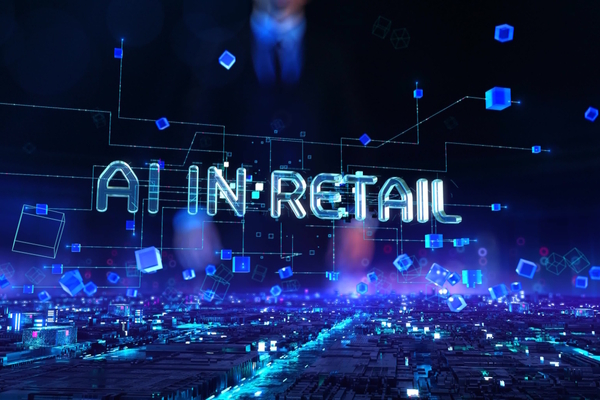Understanding the extent of enterprise software
Emma Peyman at Conscia UK advises that understanding corporate software assets drives agility and growth

In a flat economy, rising workforce costs and changing working models, UK businesses are under continual pressure to save money and/or flex their operations. So how can CIOs better control technology costs while giving their boards wider options for business development, upscaling their workforce, and kick-starting business transformation?
Faced by these challenges, making the most of what’s ‘under the bonnet’ in terms of company software licensing, and leveraging it more effectively, is receiving overdue attention. Given UK organisations’ documented challenges in optimising software assets, there’s scope for huge savings: the UK universities’ technology agency the JISC reported savings of more than £500 million alone in 2023/24 by using centrally-negotiated licence frameworks.
Companies’ technology acquisition has traditionally been characterised by boundless product choice – and confusingly wide purchasing software licensing agreements – as tech firms monetise years of product development. Non-compliant or inconsistent software licensing can often lead to extra licence charges, penalties, or even potential service interruption.
Consolidating software and corporate strategy
An under-realised aspect of enterprises’ technology acquisition is the more flexible opportunities afforded by more flexible enterprise-level software buying and licensing agreements. These new contracts enable UK IT buyers and C-level executives to better scope their organisation’s software needs and adapt their corporate strategy as trading conditions change.
This drive for greater value for money is also being enabled by consultancy input from technology integrators’ expert software licensing teams. They can help CIOs identify the best long-term value options from enterprise-level software purchasing strategies and achieve more flexibility in available licences for users, giving companies vital headroom for expansion.
Enterprise software agreements deliver four main benefits for IT teams, including:
1. Long-term value
First, when enterprise technology acquisition often appears complex, new enterprise software agreements combine buying power and competitive, long-term pricing. For example, certain agreements can ensure fixed-list technology pricing over the agreement’s lifetime, giving customers greater budget predictability and simplicity – in contrast to à la carte software buying that fails to leverage company buying power and often leads to yearly cost increases.
Enterprise-level agreements can also be paired with pricing incentives such as fixed discounting on the software licence suites committed and multi-suite stacking discounts from the same vendor. This enhanced buying flexibility gives organisations greater incentives to expand their operations and a more cost-effective route to upscale their workforces.
These agreements can also leverage technology vendors’ “true-up” enterprise software licensing agreements. These deals allow customers to adjust software user numbers after a set contract period and align their software expenditure with ‘real-world’ usage. Licensing specialists can apply their “true up” agreement expertise to help company IT buyers drive long-term value and vary the user licences available.
One leading vendor’s annual “true forward” deals will review any over-consumption for the previous 12 months and forward charge for the increase for the remaining term of the agreement, with no retrospective billing. A UK university saved nearly £100K in software costs using an enterprise agreement when refreshing security hardware approaching the end of its lifecycle. This approach can also include a “growth allowance” of up to 15% on user-based licences, giving headroom for increases in staff count without penalty.
2. Simpler tech access
Second, so relentless is technology innovation that sourcing and accessing appropriate technology and software can feel like shooting at moving targets. Enterprise agreements simplify and derisk this buying process, giving buyers easier access to agreed portfolios of cutting-edge products and capabilities (e.g. covering networking, application infrastructure, cyber-security, collaboration tools and services) and a pathway to business consolidation and transformation.
And instead of old-style perpetual software licenses fixed to a single device, today’s software licensing accessed via enterprise software agreements can incorporate “value shift” principles, so buyers can repurpose their existing investment to adopt new technology innovations as they emerge. Examples include companies being able to switch from on-premises-controlled networks to cloud-based control models during the same license agreement (or vice versa) and upgrade the licensing tier to access enhanced product functionality. This also enhances the agreement’s long-term value, allowing the company to pivot more easily as its strategic priorities change.
3. Time savings
Third, organisations that switch to enterprise-level agreements simplify procurement processes, reduce transaction costs and can cut IT teams’ contract administration time by 85%. With these agreements, less time is spent on budgeting, contract negotiation, procurement and inventory management, when traditional à la carte buying teams are managing multiple software renewals across multiple vendors.
The same principle applies to licence growth, which requires buyers to navigate the same lengthy procurement process of pricing requests, vendor approvals, budgeting and order processing. Organisations may run the risk of service interruption and penalties if their licensing is out of compliance, for example, if renewals are missed, or late, or if they are overconsuming against their purchased licence entitlement. The enterprise agreement model allows organisations to gain immediate access to the software they need, and achieve predictable costs for budgeting.
4. Consolidation and ROI
Forward-looking technology providers also use annual software licence auditing to help CIOs understand their assets and identify current or future licensing capacity issues. Audits can identify benefits such as:
- Consolidating multiple contracts into a single agreement, simplifying future auditing and inventory tracking
- Assessing their workforce’s adoption of new technologies (via monitoring user licence uptake) and identifying new ways to drive adoption to ensure better ROI from existing investments
- Assessing the organisation’s software inventory, eradicating duplication of features across multiple contracts (e.g. multiple products with ‘cross-over’ between their features may be purchased without realising there are duplications as a result of procurement by different teams)
- Recategorising existing enterprise agreements as new agreements, helping IT teams identify their software needs over 3 to 5 years and aligning new purchasing deals with organisational strategy.
Control, agility and savings
Understanding what’s under the “software bonnet” may not have caught executives’ eyes until recently. However, CIOs who collaborate closely with their IT provider on enterprise-level software licensing needs can gain a better grip of their IT budget control and reorient technology acquisition strategy towards annualised efficiencies and sustained future growth.
Emma Peyman is a software specialist at Conscia UK
Main image courtesy of iStockPhoto.com and stuartmiles99

Business Reporter Team
Most Viewed
Winston House, 3rd Floor, Units 306-309, 2-4 Dollis Park, London, N3 1HF
23-29 Hendon Lane, London, N3 1RT
020 8349 4363
© 2025, Lyonsdown Limited. Business Reporter® is a registered trademark of Lyonsdown Ltd. VAT registration number: 830519543





